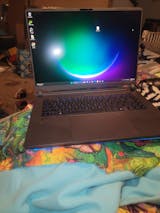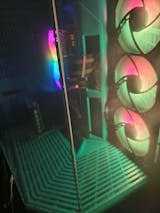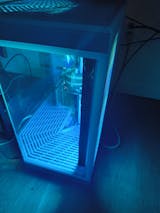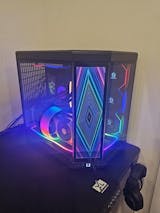You're not the only one who has experienced a quick stutter in the middle of a game or while rendering, even though they have a lightning-fast PC. Even if you have a high-performance device, it doesn't always work smoothly. These bumps are often caused by something hidden: interruptions.
We will talk about what pauses are, how they work, and why they can happen to even the fastest PCs.
What Are Interrupts?
Interrupts are messages that tell your computer's engine that it needs to do something right away. Think of them as important alerts. An interrupt is sent by a piece of hardware that needs to talk to the CPU, like your mouse, keyboard, or graphics card. The machine then stops what it's doing to handle the delay, which keeps your system responsive.
Like, when you move your mouse, the system handles that input through a delay and changes the cursor right away. You would have a lot of lag and your PC would feel slow without breaks.
Why Do Interrupts Cause Stutters?
There must be interrupts, but too many of them can be annoying. Here's how:
1. Interrupt Overload
- When many devices send interrupts at the same time, the CPU can't handle them all. It has to deal with a lot of different objectives at once, which can slow down processing jobs like playing games or listening to music, causing stutters.
2. High Priority Interrupts
- Not every delay is the same. Some of them, like those from your graphics card or network link, are very important. They can get in the way of lower-priority jobs, which can freeze other processes for a short time and cause slowdown.
3. Drivers and Interrupt Handling
- Interrupts can go wrong with drivers that are too old or not tuned well. A bad driver, for example, could send a lot of needless interrupts to the CPU, slowing down the system and making it obvious.
4. Deferred Procedure Calls (DPC)
- A delayed process call is a job that the CPU often plans to do after handling an interrupt. If there are too many DPCs, you may see spikes in delay, especially when you're gaming or streaming a lot.
How to Diagnose Interrupt-Related Issues
If you suspect interrupts are causing stutters, here’s how to investigate:
1. Latency Monitoring Tools
- You can use tools like LatencyMon to figure out if the problem is interrupt processing or DPC delay.
2. Device Manager
- In the Windows Device Manager, look for drivers that are out of date. Problems with interrupts are often caused by drivers that are too old or don't work with each other.
3. Resource Monitor
- To see how much CPU is being used, use the built-in Windows Resource Monitor. Interrupt problems could be caused by system tasks using a lot of CPU time.
Tips to Minimize Interrupt-Induced Stuttering
1. Update Drivers Regularly
- Drivers for your GPU, CPU, and other devices should always be up to date. Manufacturers often put out improvements that make it easier to deal with interruptions.
2. Disable Unnecessary Devices
- Interrupts can still come from devices that aren't being used, like a camera that is turned off. To reduce needless load, turn off gear that isn't being used in the Device Manager.
3. Upgrade Hardware
- Older CPUs can't handle a lot of interrupts. If your system still stutters after being optimized, getting a new chip that can handle interrupts better might help.
4. Optimize System Settings
- For faster performance, cut down on idle tasks and make sure your PC's power plan is set to High Performance.
Stutters can happen on even the fastest PCs. Even though interrupts are necessary for your computer to work, they can slow it down if they're not treated properly. You can get rid of those annoying hiccups and get the most out of your high-performance computer by learning how interrupts work and taking steps to handle them in the best way possible.
So, the next time your PC stutters, keep this in mind: it might not be the hardware. It's possible that the CPU is handling too many "urgent notifications."














